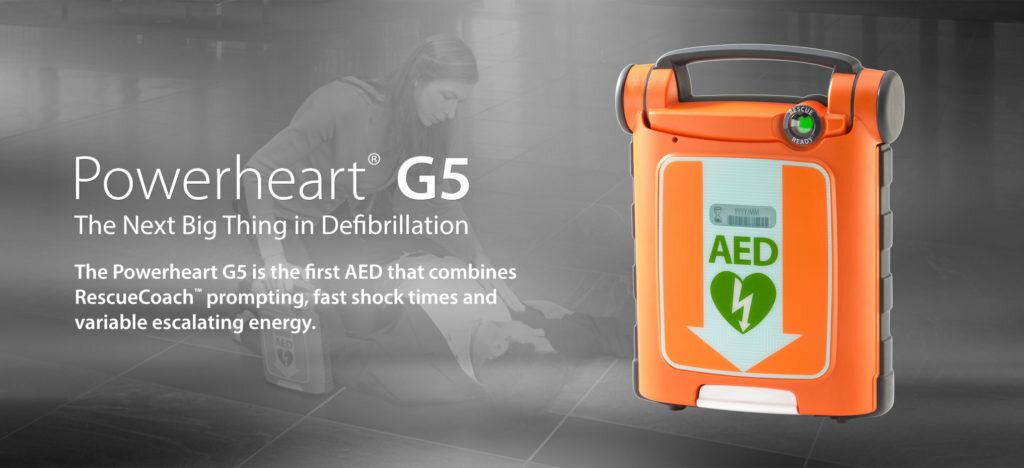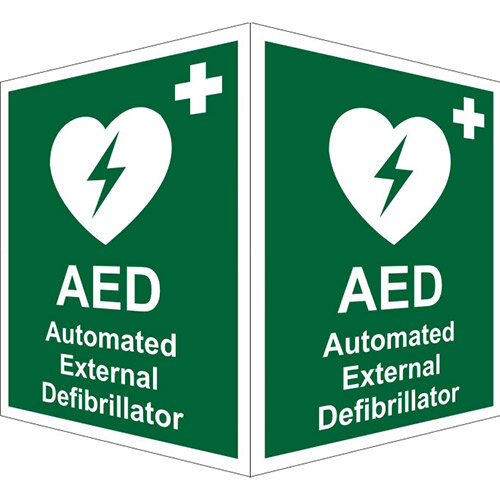How to Save a Life: AEDs in the Workplace
Automatic External Defibrillators (AEDs) are becoming more available in workplaces and public spaces. If you currently don’t have a defibrillator installed in your workplace or have access to one, here are some important facts to consider.

AEDs have been designed to be used on people undergoing a Sudden Cardiac Arrest (SCA) – which is currently a leading cause of premature death. However, with speedy response and the right equipment, lives can be saved.
Installing an AED in your workplace can have a huge number of benefits to your business and beyond. Not only will it give some peace of mind to members of staff and show you care about your employee’s health and wellbeing, but it could also raise company profile locally should you choose to give access to the AED for the local community.
When a sudden cardiac arrest happens, it is essential that people in the vicinity recognise swiftly and correctly. If you suspect a SCA, here are the steps you should follow:
- Call 999 Immediately
- Start CPR (Cardio Pulmonary Resuscitation)
- If there is a Defibrillator (AED) in the building find and use
Each of these stages is vital to provide the best chance of survival but a critical factor is the speed with which the AED is accessed and applied.
AEDs have been designed to be used by most people. Your dedicated first aider will most likely have received training on how to use and AED but if they’re not available at the time of the emergency the system has been designed to be simple enough to be used by someone with limited or no training. AEDs are easy to use, compact, portable and very effective. The machine guides the user through the process by giving verbal instructions and visual prompts.
The AED works by analysing the hearts electrical rhythm and if it detects a rhythm likely to respond to a shock, it will charge itself ready to deliver a shock. After this the AED will tell the rescuer to give the victim CPR. This means that the affected person receives effective treatment during those critical first few minutes after a SCA, whilst the emergency services are on their way.
Modern AED systems are very reliable and won’t allow a shock to be given unless it is needed, they are therefore extremely unlikely to harm a person who has collapsed in suspected SCA. They also present minimal risk to the person using it.
The systems generally require little maintenance. Most AEDs run daily checks and display a warning if maintenance is required. Typically, they have a minimum life expectancy of ten years and the batteries and pads have a good shelf-life, meaning the AED can be left unattended for lengthy periods of time.
Anyone wishing to install an AED should seek advice and guidance from the local ambulance service or community first responder for ideas on what type of system to purchase for your needs, also where to place it for maximum efficiency. If you choose not to seek advice from these sources before purchasing, you should still notify them that you’ve installed the system, in case they need to gain access to assist with a SCA.

AEDs in the Workplace
Whilst it is currently not mandatory to have an AED in the workplace, efforts are being made at present to make AEDs mandatory in the workplace, schools, sports venues and certain public buildings. So, if you don’t currently have an AED within your business, likelihood is you will need to install one at some point to help protect your staff and members of the public, particularly if you work in a large organisation or public area.
AEDs in Schools
An AED in a school is more likely to be used on an adult than a pupil. However, it’s important that pupils become familiar with them and can learn about their purpose; this could be incorporated into classes on first aid, including CPR. School age children have been shown to be capable of using AEDs in simulated cardiac arrest scenarios and all school children should be taught emergency life-saving techniques.

Defibrillators and First Aid | http://bit.ly/2LkzbHC
Source via Spotlight | Shaping The Future of Workspaces

